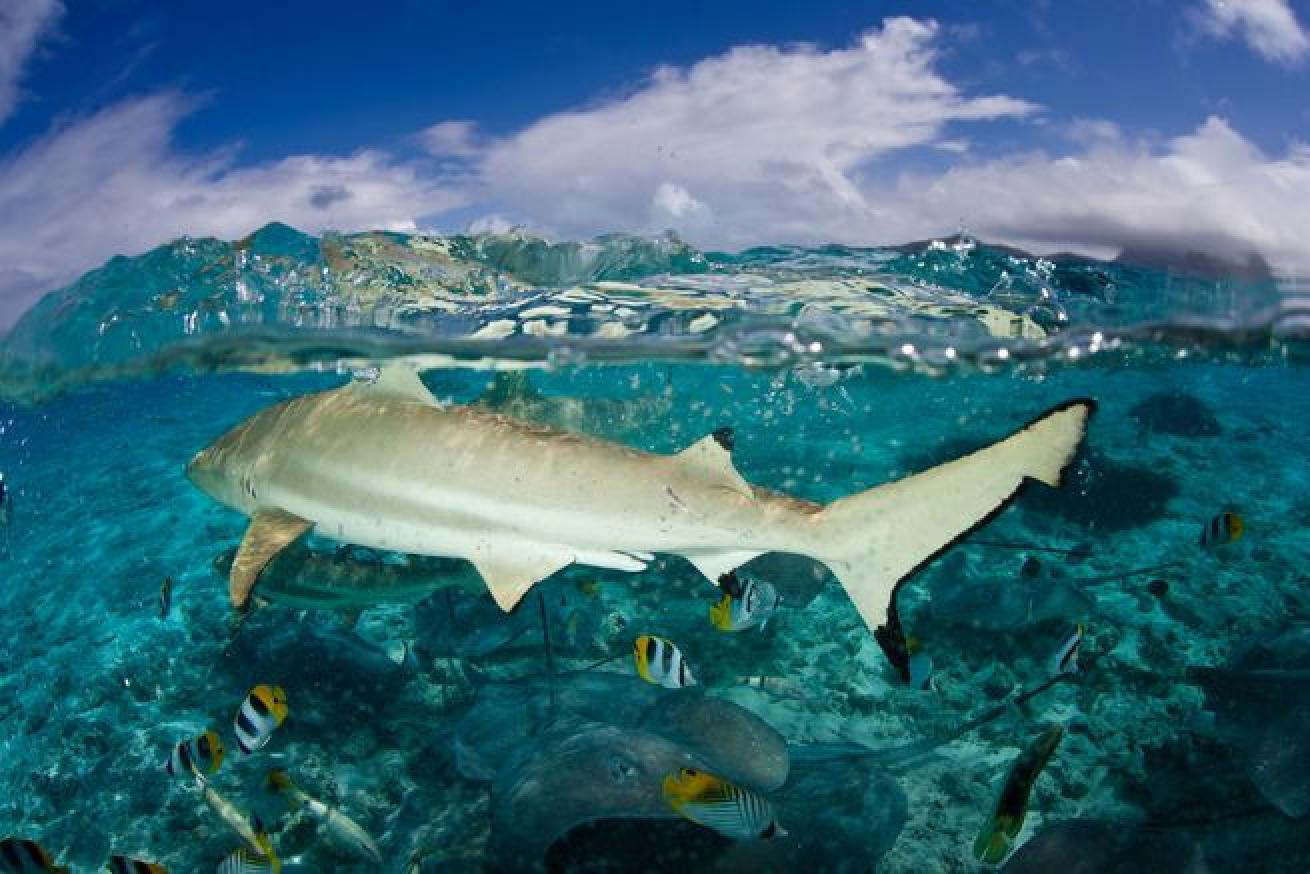French Polynesia

With apologies to John Milton, paradise isn't lost — it's about 2,500 miles southeast of Hawaii. That's where groups of sinfully beautiful volcanic islands challenge poets, painters and photographers to do them justice. French Polynesia is a system of five sun-splashed archipelagos, including the Society, Tuamotu, Marquesas and Australs Islands, all ringed by reefs and laden with lagoons. Tahiti, one of the Society Islands, is the most well known.
From plentiful land-based dive resorts on most every island, boat rides to dive sites are always short and both the weather and water is tropical. Drift diving is the way to go here, and the volcanic nature of the islands means underwater topography spanning from walls and valleys to passes. Oh, and did we mention that these islands have excellent big life? If you're into sharks (black-tips, white-tips and lemons) and mantas, it's hard not to find plenty of both. Shark feedings are common on several islands, including Bora Bora, Moorea and Raiatea, but if you prefer to encounter the animals minus wranglers and bait, it's easy, as sharks are prevalent throughout French Polynesia.
From Bora Bora, perhaps the world's most lavishly praised island, for its stunning topside beauty, there are several worthwhile sites, including Anau, for manta rays and Muri Muri (The White Valley), where gray reef sharks make light fighter jet escorts and shadow divers throughout dives. Huahine's outer reef offers plenty of life, from jacks and eels to barracuda and sharks at Avapeihi (Fitii) Pass and Fa'a Miti, where colorful corals are a nice bonus.
But perhaps nowhere else in French Polynesia are sharks as common — and revered — as in the Tuamotus, a few hundred miles to Tahiti's northeast. That's where you'll find the island of Rangiroa, a regional drift diving haven and world-renowned shark diving destination, with visibility commonly exceeding 100 feet. The rapid rushing currents of Tiputa Pass (Shark Cave) and the sheer numbers of dozens of sharks make this site one of the most "high voltage" on this side of the Galapagos.
Also in the Tuamotus, the Circus (Le Cirque), a site off the island of Manihi, is manta ray central, while pristine Garuae Pass, near the island of Fakarava offers divers the chance to literally get carried away into the current and see congregations of sharks and smaller fish. Those same kinds of wilderness vibes exist in the Marquesas, where cave and pelagic dives can be found near the island of Nuku Hiva and in the Australs, where humpback whale encounters are common near the island of Rurutu.
Weather: The rainy season lasts from November to April; trade winds help keep conditions drier and cooler the rest of the year.
Average Water Temp: From the high 70s to the mid-80s, depending on the season — and they're reversed here in the southern hemisphere.
Average Visibility: Consistently exceeds 100 feet.
Entry Documents: For stays of up to one month, there are no visa requirements for citizens of the U.S., Canada or Mexico. A passport valid for six months and a return or ongoing ticket is required.










